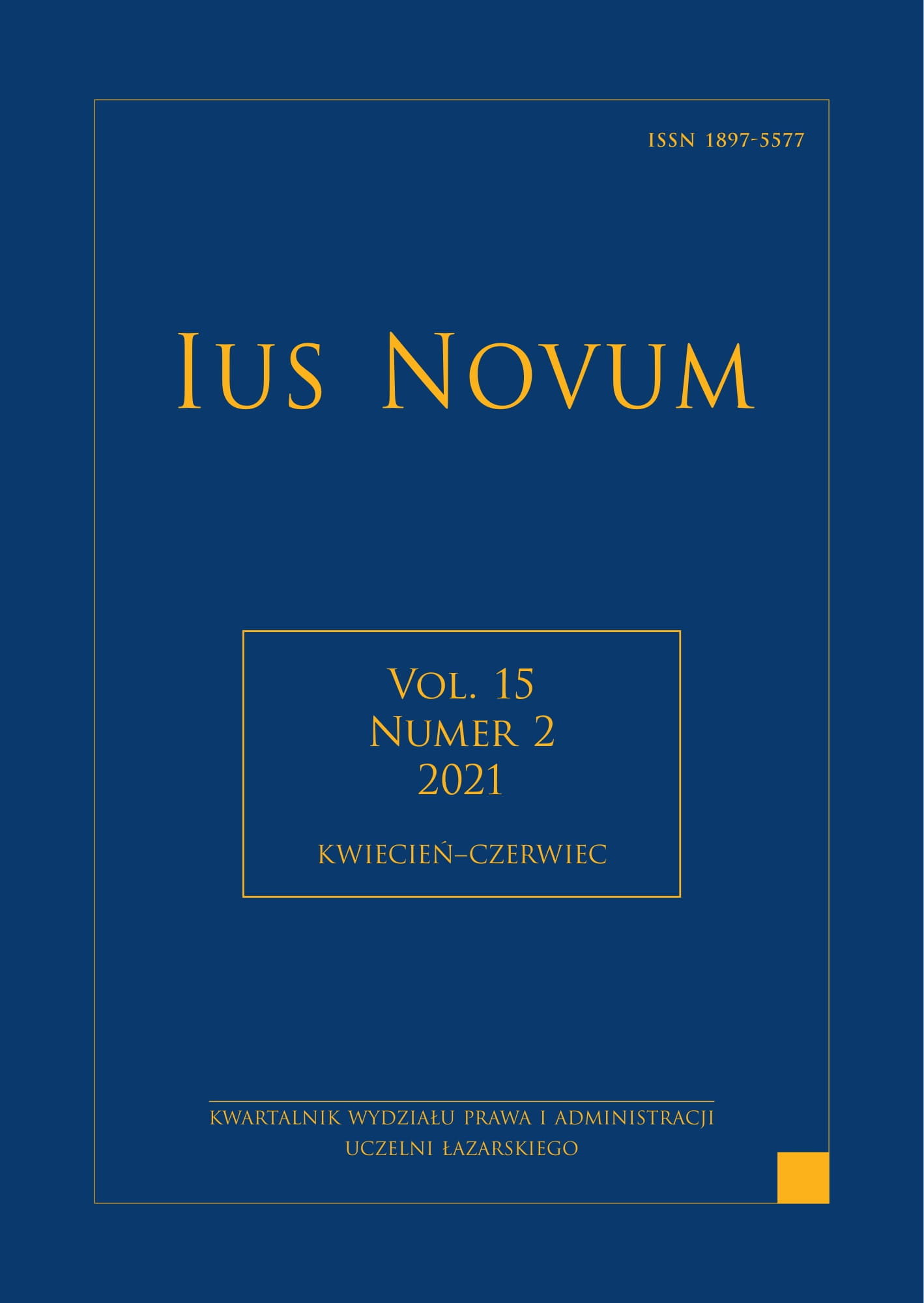Abstract
The motive for discussing the issue of the Polish Constitution of 17 March 1921 is the centenary
of its adoption. But the aim is not just to remind the anniversary of one of the historic Polish
basic laws but also to draw attention, by the way, to a series of specific circumstances
surrounding its adoption, political consequences of its entry into force and, eventually, its
importance for the Polish constitutional system.
On the one hand, it was a constitution that became an apparent sign, even a symbol
of the revival of the Polish state, which, after over 100 years’ lack of independence (being
under the rule of Prussia, Austria and Russia from the late 18th century) and World War I,
was really striving to regain its independence (the Polish-Soviet War). On the other hand, the
Constitution was adopted during a hundred years’ discontinuity in its own constitutional
evolution, separated from its own tradition and deprived of its own experience in the
functioning of the then modern constitutionalism. Patterns had to be derived from outside.
And it was a real, fundamental dilemma because it was necessary to make a choice between
two basic options: a monarchy or a republic, a presidential (American) or parliamentary
(Anglo-French) system? And, against that background, fierce doctrinal and political disputes
broke out because neither the doctrine was really the country’s own nor the political system
was ultimately developed and tested.
Nevertheless, there was an enormous ‘appetite for a constitution’; an intensively restored
country could not lack it. The French culture, which was popular in Poland, played a decisive
role in the choice of the model of the French Third Republic, and the specific idealisation of
a parliament as a body of national representation resulted in the choice of a system with strong
legislative power and, in consequence, with weak executive power. What is more, the political
breakup did not allow for the formation of a parliamentary majority and, therefore, the
efficiency and stability of the government. Again, that led to fierce disputes. But amendments
to the Constitution were already adopted then and, as a result, a new act substituted for it in 1935. However, it adjusted to the trends of the 1930s in Europe instead of continuing
a democratic route in the political system.
The desired and long-awaited March Constitution, but criticised “before, during and after”
the time it was in force, remained a symbol of the Polish democratic constitutional thought,
which is still criticised.
The article presents the circumstances and atmosphere accompanying the adoption of
the act, the course of its adoption, basic principles and content of the Constitution, and
a series of accompanying opinions, criticism, and proposals of the then contemporary Polish
constitutional doctrine.
References
Ankieta o Konstytucji z 17 marca 1921, „Czasopismo Prawnicze i Ekonomiczne”, Władysław
Leopold Jaworski, Kraków 1924 (reprint: Wyd. Sejmowe, Warszawa 2014).
Dzieje Sejmu Polskiego, red. J. Bardach, Wyd. Sejmowe, Warszawa 1997.
Esmein A., Prawo konstytucyjne, tłum. z franc. W. Konopczyński, K. Lutostański, Warszawa
(reprint: Wyd. Sejmowe, Warszawa 2013).
Gwiżdż A., Sejm i Senat w latach 1918–1939, w: Dzieje Sejmu Polskiego, red. J. Bardach, Wyd.
Sejmowe, Warszawa 1997, s. 145–202.
Komarnicki W., Ustrój państwowy Polski współczesnej. Geneza i system, Wilno 1917, 1937 (reprint
wyd. z 1937: Wyd. Uniwersytetu Jagiellońskiego, Kraków 2006).
Komarnicki W., Polskie Prawo Polityczne (Geneza i system), Warszawa 1922 (reprint: Wyd. Sejmowe,
Warszawa 2008).
Konstytucje Polski, red. M. Kallas, t. 2, Warszawa 1990.
Konstytucje Polskie 1918–2008, red. T. Mołdawa, Warszawa 2008.
Kruk M., 100 lat państwowości czechosłowackiej i polskiej. Podobieństwa i różnice, „Krytyka Prawa.
Niezależne studia nad prawem” 2019, t. 11, nr 1, s. 191 (tam: 100 Years of Statehood of
Czechoslovakia and Poland. Similarities and Differences, s. 215).
Kruk M., Le parlement dans la tradition constitutionnelle polonaise, w: L’Etat et le droit d’Est en
Ouest, Melanges offerts au profsseur Michel Lesage, Paris 2006, s. 201–214.
Małe Konstytucje. Ustawy zasadnicze okresów przejściowych 1919–1947 – 1992, red. R. Jastrzębski,
M. Zubik, Warszawa 2014.
Starzewski M., Środki zabezpieczenia prawnego konstytucyjności ustaw, Kraków 1928 (reprint:
Wyd. Sejmowe, Warszawa 2009).

